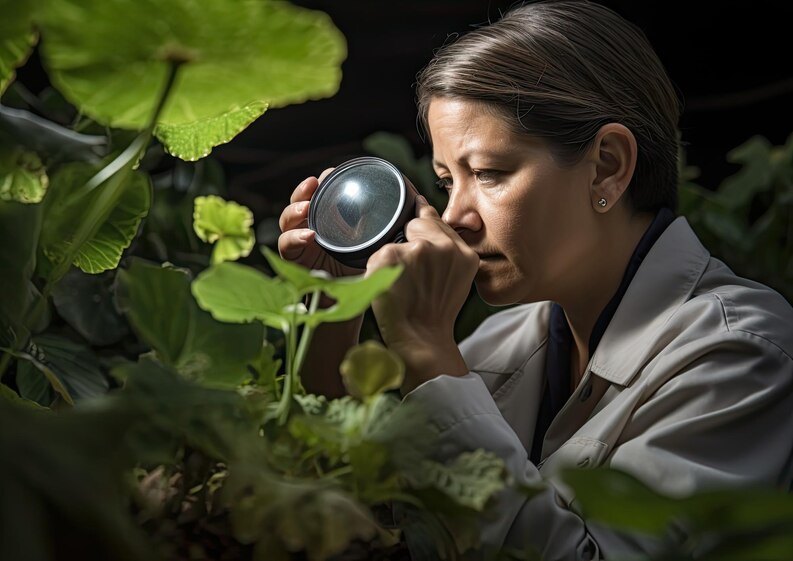Anyone who has spent a lot of time outside knows that wild plants are frequently the only food source in survival situations. It could mean the difference between life and death for these plants if they were correctly identify. The physical characteristics, distribution, habitat, and edible parts of wild plants are all discussed in this blog post; the most important parts of identification. There are more than one hundred of them, making the distinction between edible and poisonous plants even simpler. This book and its information should never be take on the trail by any serious outdoor enthusiast.

Methods of Plant Identification
If you really need to understand how you can identify a specific plant, follow the below-explained ways:
- Identify the Plant’s Family – The identification of the unknown plant’s families constitutes the initial step. Once the family name is known, the keys to genera can be used to determine the generic name, and the species key can be used to identify the specific plant. Since the obtained plant’s identity and name may be incorrect for a variety of reasons, it is always safe to verify that the plant’s description reasonably matches the observed characteristics.
- Area Where the Plant is Found – The use of the most recent flora and a checklist specific to the area is the second method. These typically include a list of the plants that are known to be in the area and other pertinent habits, distributional, and frequency data. An unidentify plant can be place in a genus with one or more species by elimination, and identification can be complete by comparing its characteristics to those provided in any standard work.

Edible Plants Classified for Survival
When it comes to edible plants, this is when they are at their most pliable and delicious. Additionally, your backyard might just be the most productive and convenient location for foraging this time of year. Some of the most common edible weeds that may be lurking in your yard and garden are list below.
Burdock (Arctium Lappa)
If you look for irritating burrs, you can easily identify this plant. Look for a rosette of oblong, pointed leaves without a stem that grows close to the ground in the first year when those are absent.
- Edible Parts: The leaves can be eaten, but older ones are tough and taste better cook. The inside of the flower stalks and the young roots are also edible.
- Flavor: Sweet & Earthy Fragrance.
- Caution: Cocklebur appears as though Burdock, yet its leaves should be cook to kill poisonous parts.
Wood lily (Lilium Philadelphicum)
On a 1- to 3-foot stalk, look for orange flowers with purple spots in the cup shape. Whorls of long, narrow leaves make up the stem.
- Edible Parts: This wild plant’s flowers and seeds can be eaten.
- Flavor: The flavor of this plant is slightly peppery.
- Caution: Some varieties of lilies are not edible.
Bamboo (Bambusoideae)
There are many bamboo species, and 110 of them are edible. Use a guide to find the varieties that grow close to you.
- Edible Parts: The plant’s edible portion is its shoots.
- Flavor: They are a good way to add a crunchy texture to a dish and come in a variety of flavors, from savory to sweet.
- Caution: Check to see which kind of bamboo you’re eating. Cyanogenic glycosides can be toxic in large quantities in some. Before eating, shoots should be cook in water.

Deadly Plants You Should Avoid
Despite their apparent harmlessness, plants can be home to some of the world’s most lethal poisons. Poisonous plants have been the cause of human deaths throughout history, from the poisonous hemlock that killed Socrates to children accidentally eating deadly nightshade. This spooky list introduces you to some of the most notorious plants and the poisons they produce.
Water Hemlock (Cicuta maculata)
Water hemlock has been describe as “the most violently toxic plant in North America,” and it is closely related to poison hemlock, which is the plant that is credit with killing Socrates. Water hemlock is a large wildflower that belongs to the family of carrots. It looks like Queen Anne’s lace and is sometimes mistaken for edible parsnips or celery. However, water hemlock contains the lethal cicutoxin, particularly in its roots, and anyone who consumes it will quickly experience potentially fatal symptoms.
Deadly Nightshade (Atropa Belladonna)
As per legend, Macbeth’s troopers harmed the attacking Danes with wine produced using the sweet product of destructive nightshade. The deadly nightshade is a plant that grows in wooded or wastelands in central and southern Eurasia. It has dull green leaves and shiny black berries that are about the size of cherries.
White Snakeroot (Ageratina Altissima)
Nancy Hanks, Abraham Lincoln’s mother, was kill by the harmless white snakeroot plant. Trematol, a toxic alcohol, is present in the flat-top clusters of small white flowers of the North American herb known as white snakeroot. Poor Nancy Hanks was poison by drinking the milk of a cow that had grazed on the poisonous plant, in contrast to those who died directly from eating the plant.

How to Consume Wild Plants Safely?
Today, you’ll learn about wild food safety and a simple tolerance test to make sure eating wild food plants doesn’t hurt your body. Even if you know a plant 100% of the time, you can’t tell how your body will react to it until you eat a small amount. This is not a scare tactic. Due to an allergy or other condition, some people experience severe adverse reactions to particular foods.
- It’s important to make sure that you communicate the binomial name when talking about wild food. There is very little room for skepticism in this manner.
- Before attempting to eat a wild edible plant, ensure that your identification is 100% accurate.
- Do not attempt a plant if you have any doubts about its identification. You can experiment with far too many other plants.
- Proceed with the Tolerance Test assuming that you are certain that you have the appropriate edible plant in front of you.
The Tolerance Test should only be perform on wild edible plants that you are certain you have correctly identify. It should not be use to test unknown, unidentified plants to see if they are edible.

Wrapping It Up
Eating wild plants can be fun and good for you if you know how to identify them and think carefully about safety and potential dangers. Blissful scrounging! When foraging for wild plants and mushrooms, it’s essential to be mindful of safety measures, especially if you become lost.





